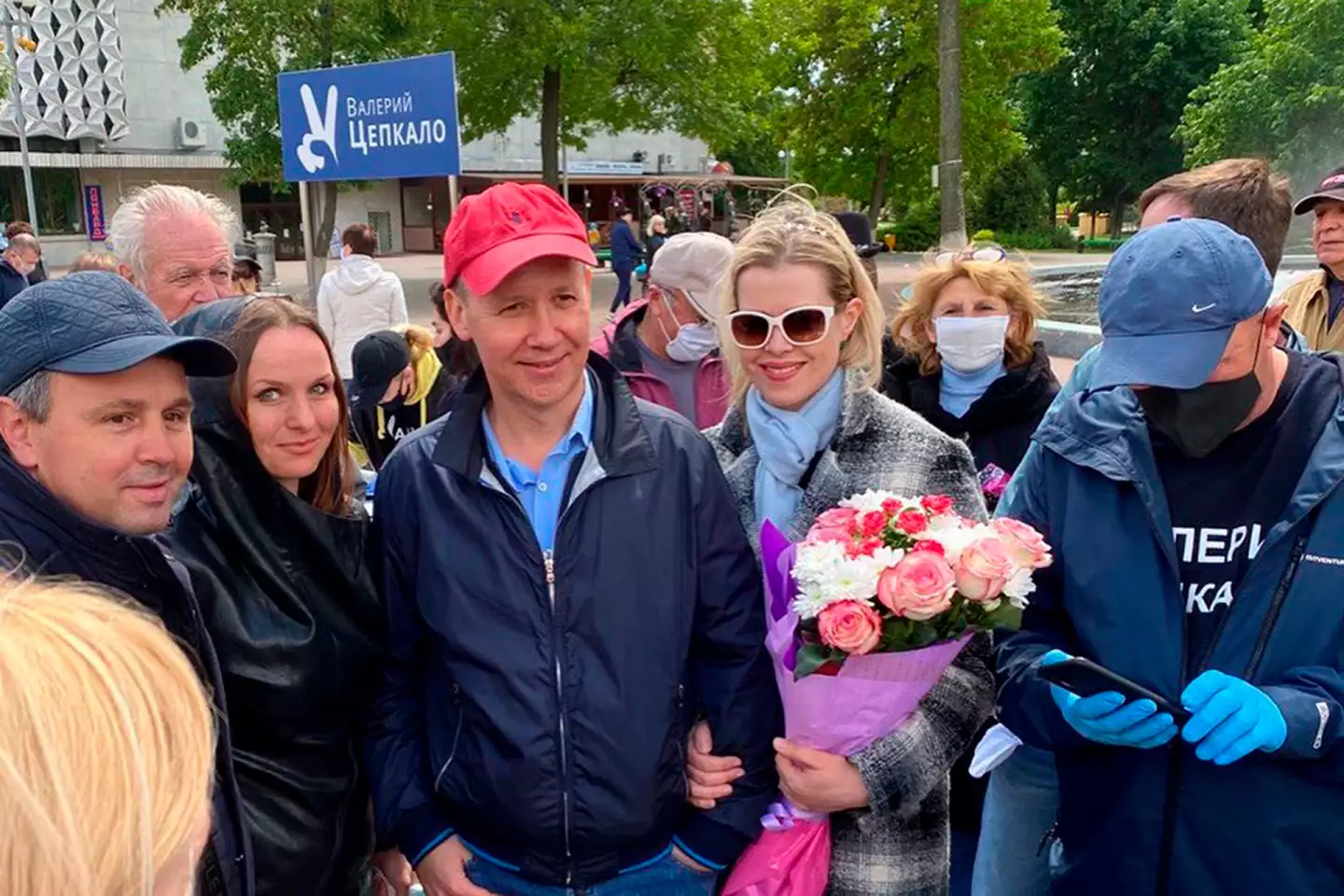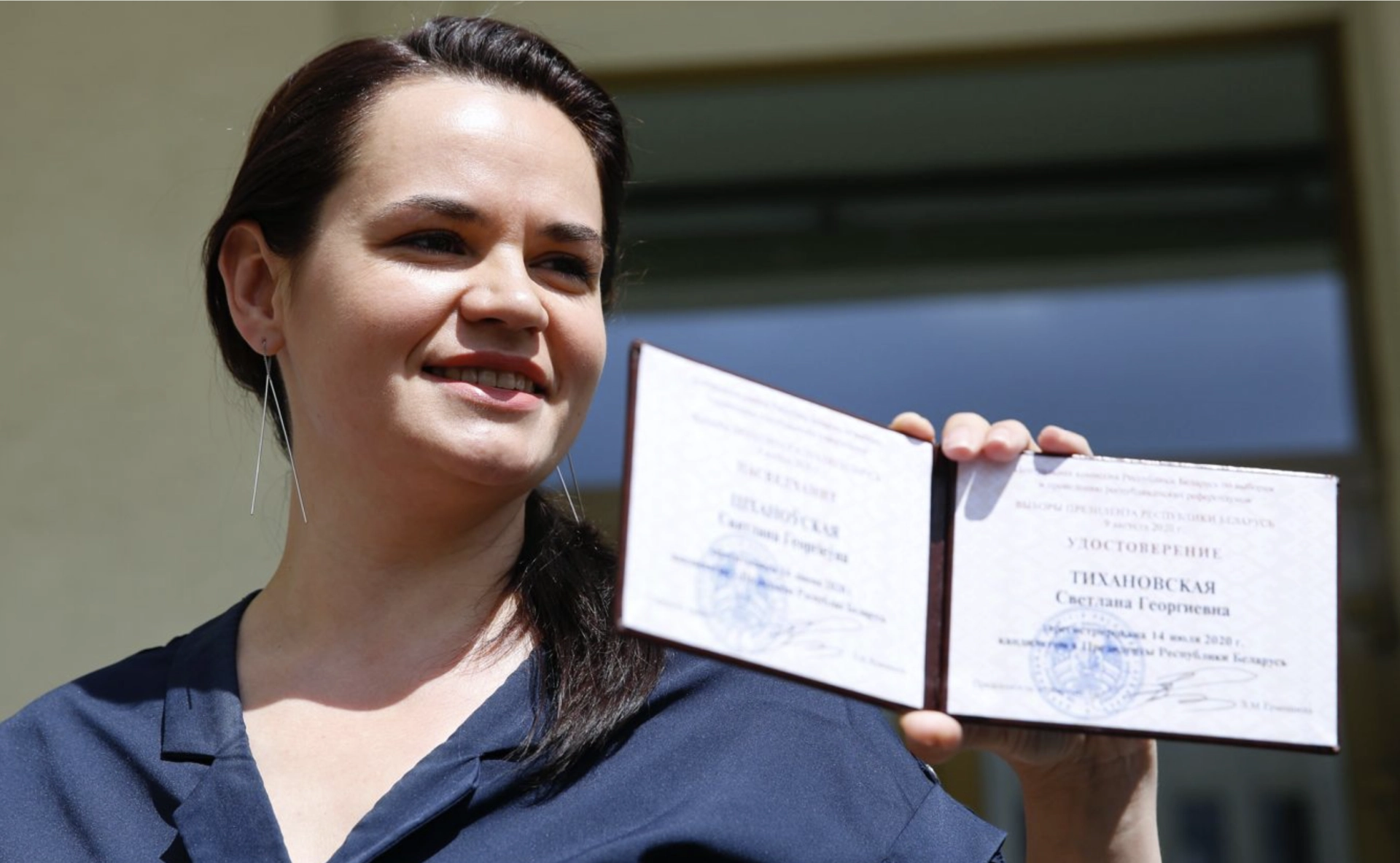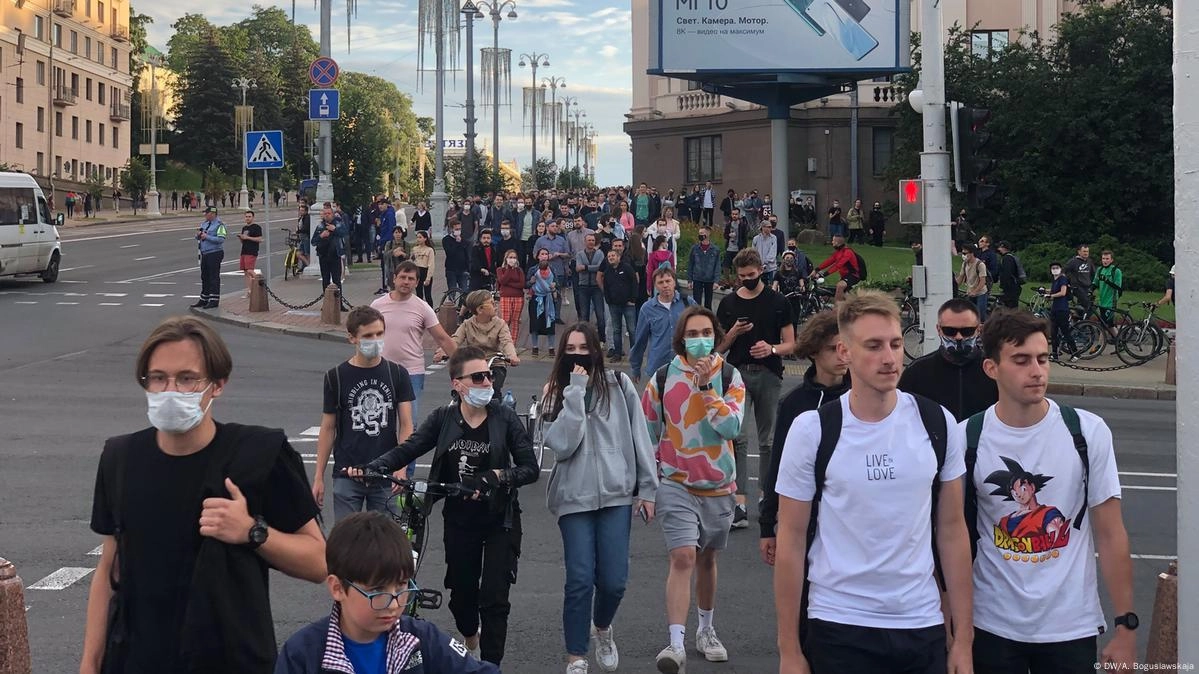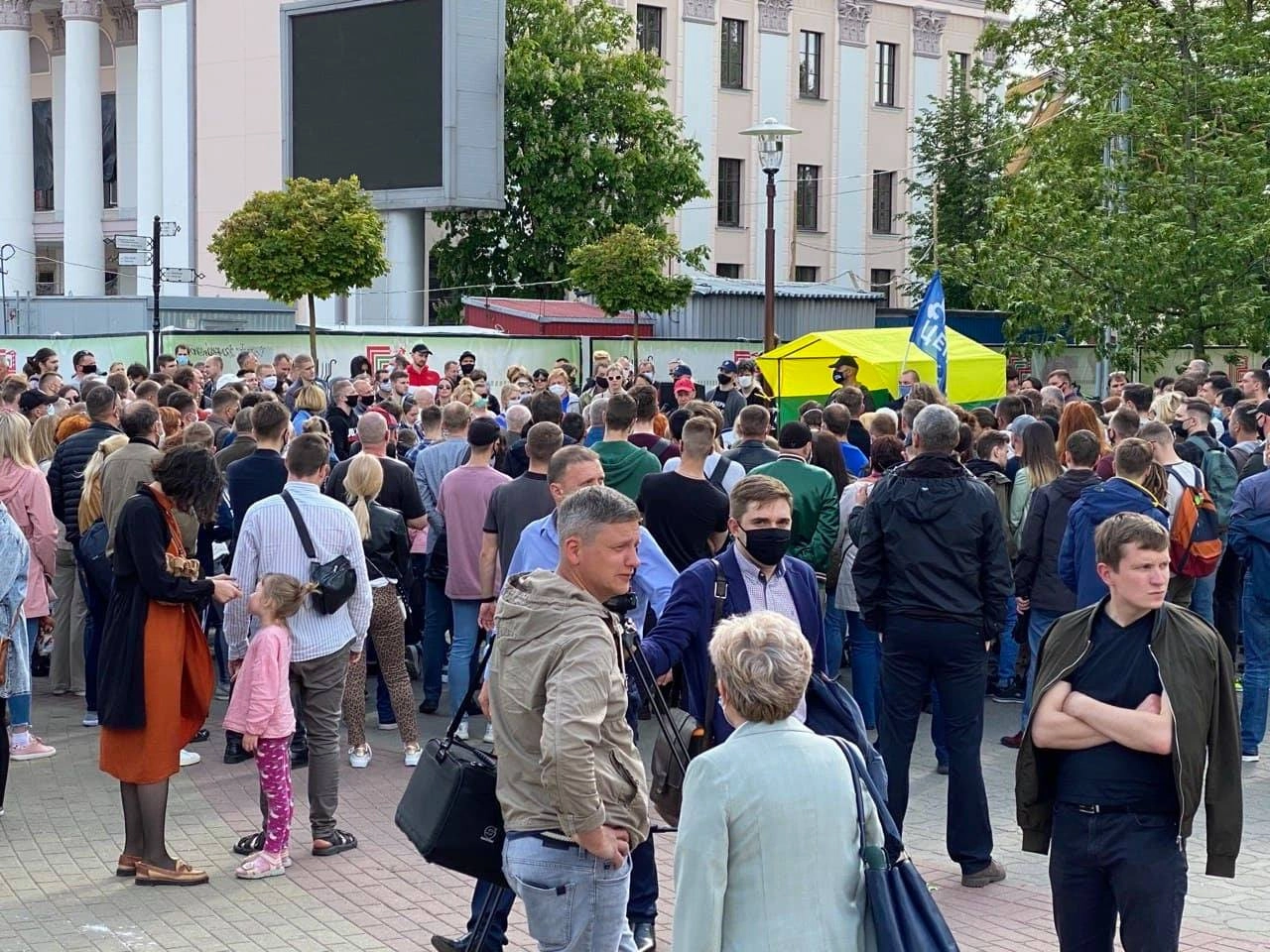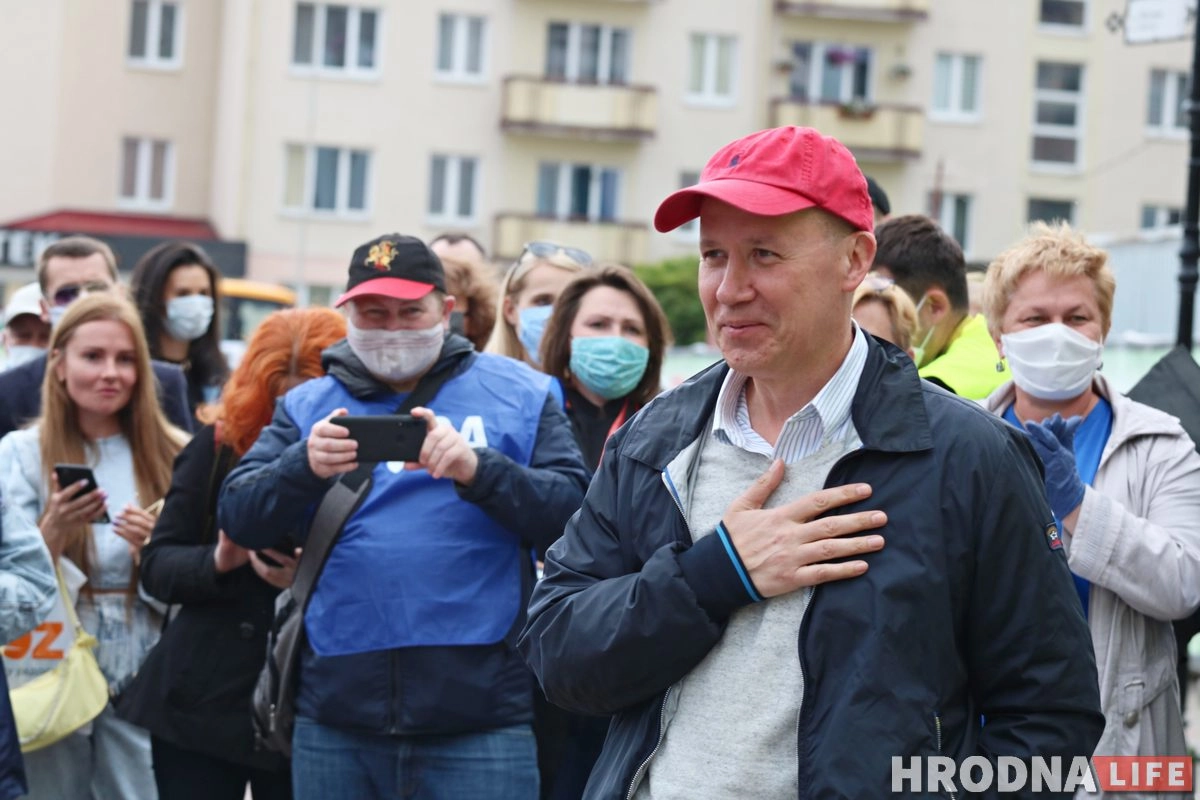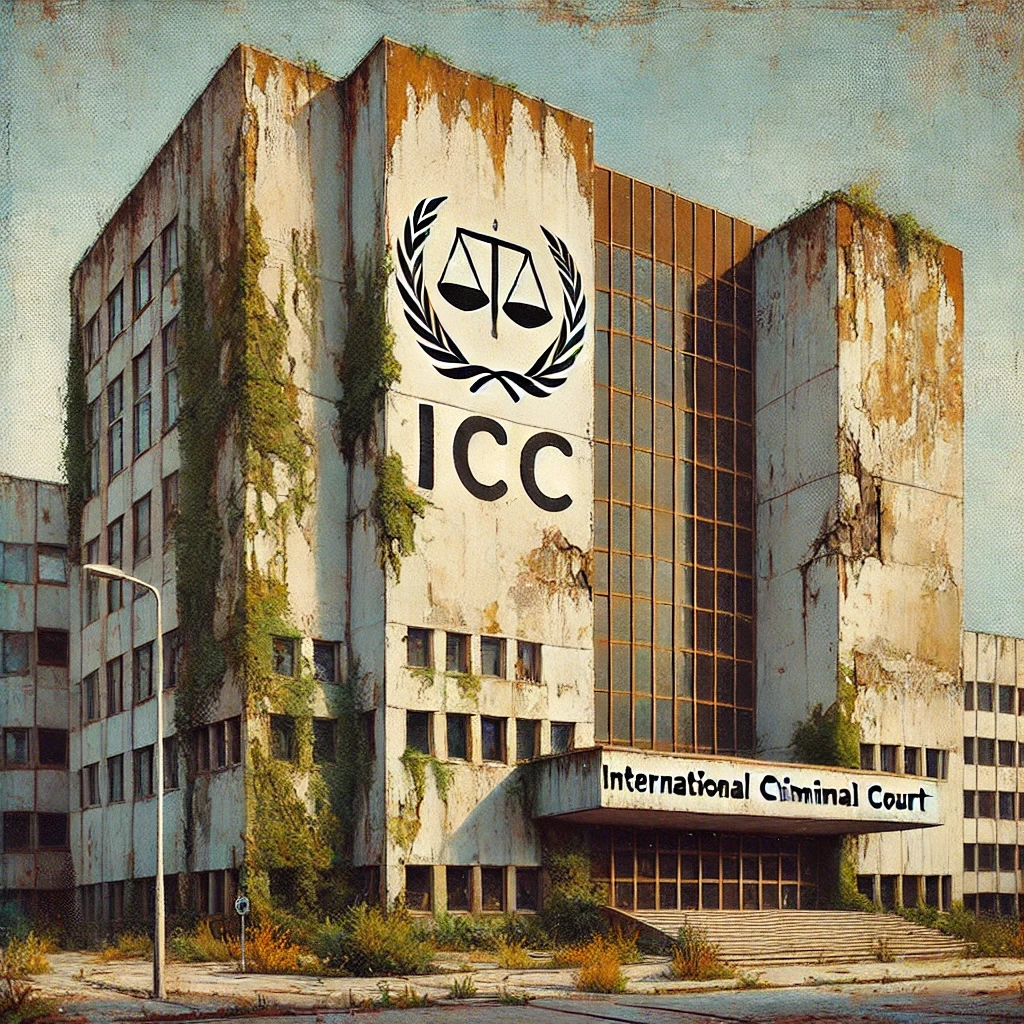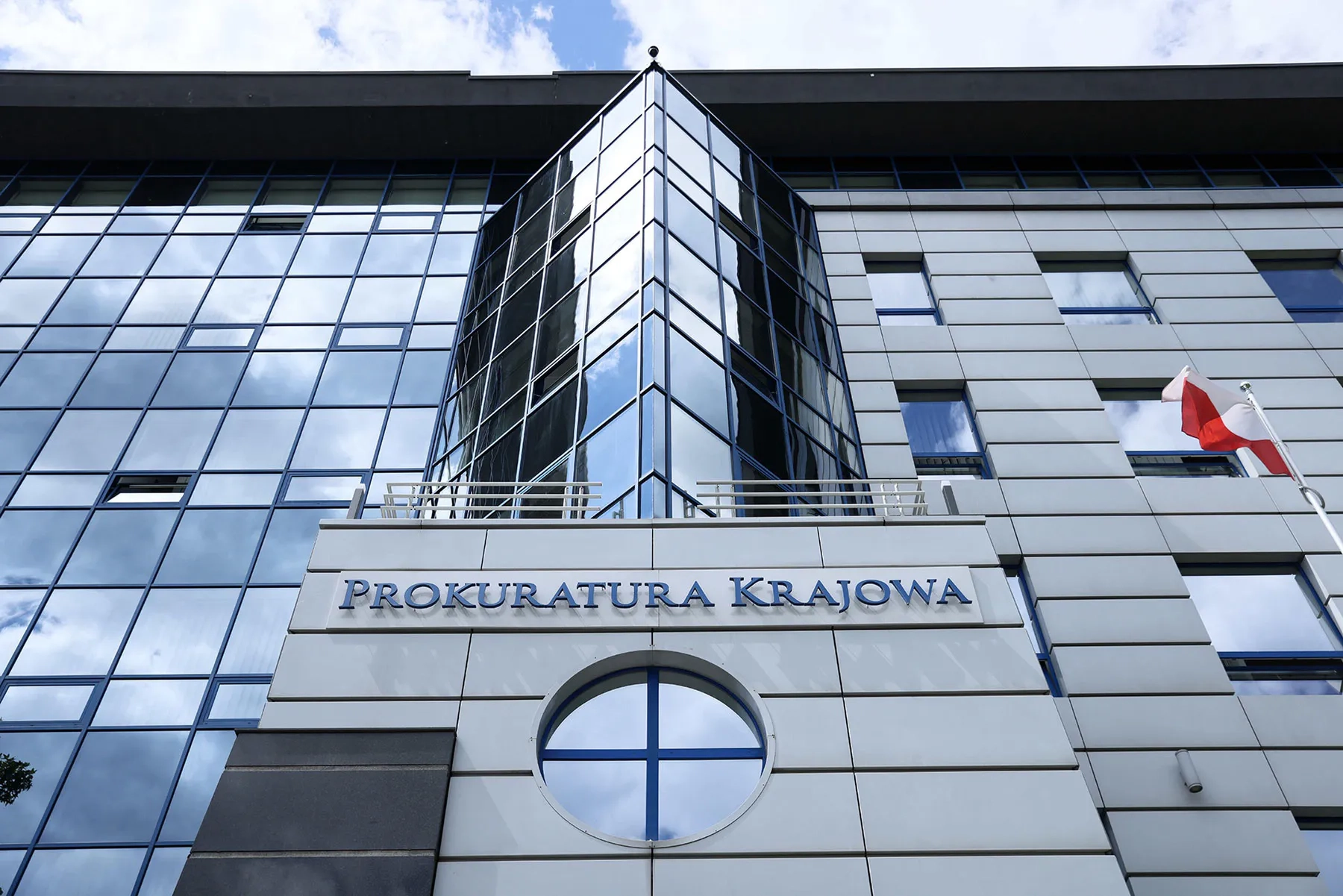By the onset of the 2020 presidential campaign in Belarus, a trio of key challengers to the Lukashenko regime had emerged. Two of them — Viktor Babariko and I — represented a new generation of leaders with backgrounds in public administration, international cooperation, and engagement with global financial institutions. We both had a solid track record in delivering large-scale, high-impact projects. The third, Sergei Tikhanovsky, became the voice of the “deep people” — those who had long suffered under humiliation and poverty, and who were regularly subjected to Lukashenko’s public insults, such as “lousy fleas,” “leeches,” “scoundrels,” and “bastards.”
Forming Campaign Teams
At first glance, the regime had little reason to worry. The electoral system was carefully engineered to prevent independent candidates from advancing even past the registration stage.
To be officially nominated, a prospective candidate needed to collect at least 100,000 citizen signatures. Moreover, only members of an officially registered initiative group were permitted to do so. However, in clear violation of the Constitution and the Electoral Code — which allocated two full months for forming such groups — the Central Election Commission (CEC) arbitrarily reduced that period to just one week.
Excluding Tikhanovsky
Even with these built-in administrative obstacles, the authorities decided to play it safe by removing Sergei Tikhanovsky from the race at the earliest possible moment. The reason cited was his previous administrative detentions, related to his provocative video journalism. Conveniently, just as the documents for registering his initiative group were due, Tikhanovsky was once again detained and placed in isolation.
To retain any chance of participation, Sergei proposed that his wife, Sviatlana Tikhanovskaya, should enter the race in his stead. A housewife with no prior employment history or involvement in public or political life, Sviatlana had, by her own admission, considered her greatest personal achievement to be the ability to “fry cutlets.” According to Sergei, she hadn’t even shown much interest in his activism.
For Tikhanovsky, the move was a tactical workaround. He believed that Sviatlana’s candidacy would provide him with legal cover to organize rallies, collect signatures, and communicate with voters. He was officially registered as the campaign manager and head of the initiative group, which in theory allowed him to take an active public role in the campaign.
The Need for Grassroots Infrastructure
Experience from previous presidential campaigns had shown that collecting 100,000 signatures realistically required at least 1,000 registered volunteers. One week was clearly not enough time to build such a network.
As a result, Sviatlana Tikhanovskaya’s initiative group — made up entirely of Sergei’s supporters — included only about 100 people, far too few to meet the necessary threshold.
The Tsepkalo Team
Despite the limited time, we managed to form an initiative group of 850 people within that single week. On paper, this was a sufficient number to collect 100,000 signatures — but only under conditions of maximum mobilization, meaning daily, nonstop work throughout the entire month. In the midst of the COVID-19 pandemic, under strict public health restrictions and mounting administrative pressure, this task proved extraordinarily difficult.
I appointed Andrei Lankin, a manager at the gaming company Wargaming — one of the resident firms in Belarus’s High Technology Park — as the head of my campaign team.
Babariko’s Record-Setting Strategy
The greatest surprise came from Viktor Babariko, who employed an entirely novel approach. His campaign was managed by his son, Eduard Babariko, an expert in social media and digital platforms. Rather than following the conventional route of gathering handwritten applications to join the initiative group — as we had done — the Babariko team leveraged a crowdfunding-style digital platform previously developed by Eduard. This allowed them to recruit supporters rapidly, in large numbers, and with minimal bureaucracy. Application forms were pre-filled and readily available for immediate use.
Furthermore, as the acting head of a major bank, Viktor Babariko had the financial and organizational resources to launch a large-scale information and media campaign with unprecedented speed. As a result, his team managed to form an initiative group of 8,900 people in just one week — a record in the history of presidential elections in Belarus.
To put that into perspective: in previous election cycles, successful candidates were able to attract only 1,000 to 1,500 activists over the course of two full months.



Candidates at Central Electoral Committee
The Start and Artificial Barriers
The official registration of initiative groups marked the formal beginning of the 2020 presidential campaign in Belarus. It quickly became clear that many people had joined these groups emotionally, without fully understanding the commitment required — sustained, intensive work for at least a month. This lack of preparedness reduced initial effectiveness and posed serious organizational risks for independent campaign teams.
A Changed Environment for Signature Collection
In previous campaigns, signatures were typically gathered through door-to-door canvassing. But by 2020, most residential buildings had installed intercom systems, significantly complicating access to apartment blocks. This became an additional line of defense for the authorities — a technological barrier that, along with administrative hurdles, made signature collection for alternative candidates even more difficult, intentionally designed to stifle and dry out the campaign process.
A New Approach to Signature Collection
Under these conditions, I made a deliberate decision to abandon the traditional door-to-door approach entirely. Together with my wife, Veronica, we opted instead to travel to the regions and hold street pickets with our direct personal involvement — something almost no other candidate had done at that early stage. Previous campaigns had relied heavily, if not exclusively, on apartment visits.
This shift in strategy was driven by a legal paradox. Belarusian election law prohibited candidates from openly campaigning for themselves during the signature collection phase. This created an absurd situation: citizens had to be persuaded to sign in support of candidates — a task only members of initiative groups were allowed to perform — while the candidates themselves were legally barred from explaining who they were, what they believed, or what they stood for. Any attempt to share one’s views could be interpreted by the Central Election Commission as illegal campaigning and grounds for disqualification. It was yet another artificial barrier, meticulously constructed by Lukashenko to restrict independent candidates’ access to the public. Naturally, Lukashenko himself was exempt from such restrictions — continuing to promote his intentions under the guise of fulfilling state duties.
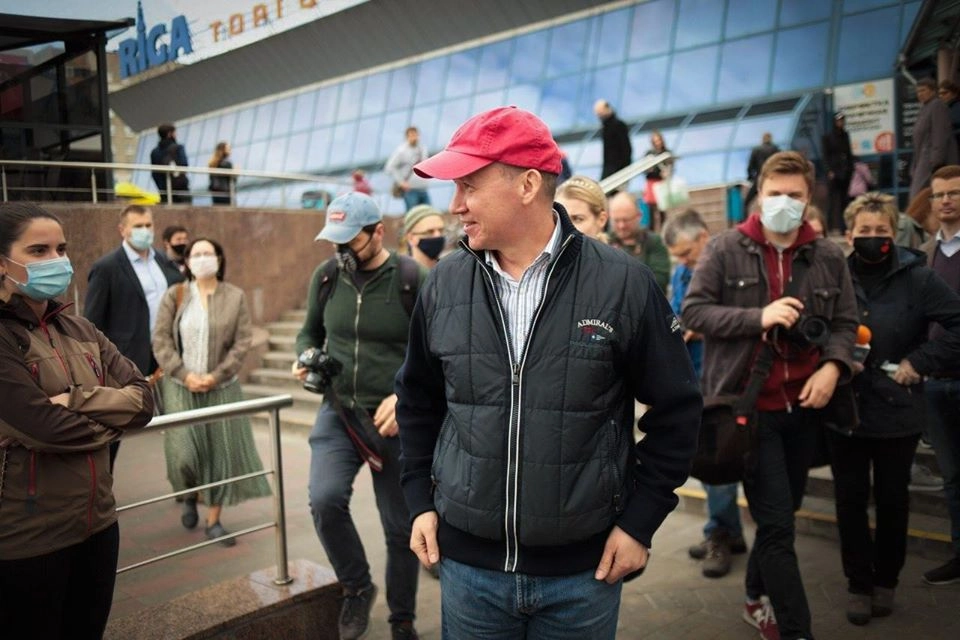
At our pickets, I spoke directly with citizens at signature-gathering tables.
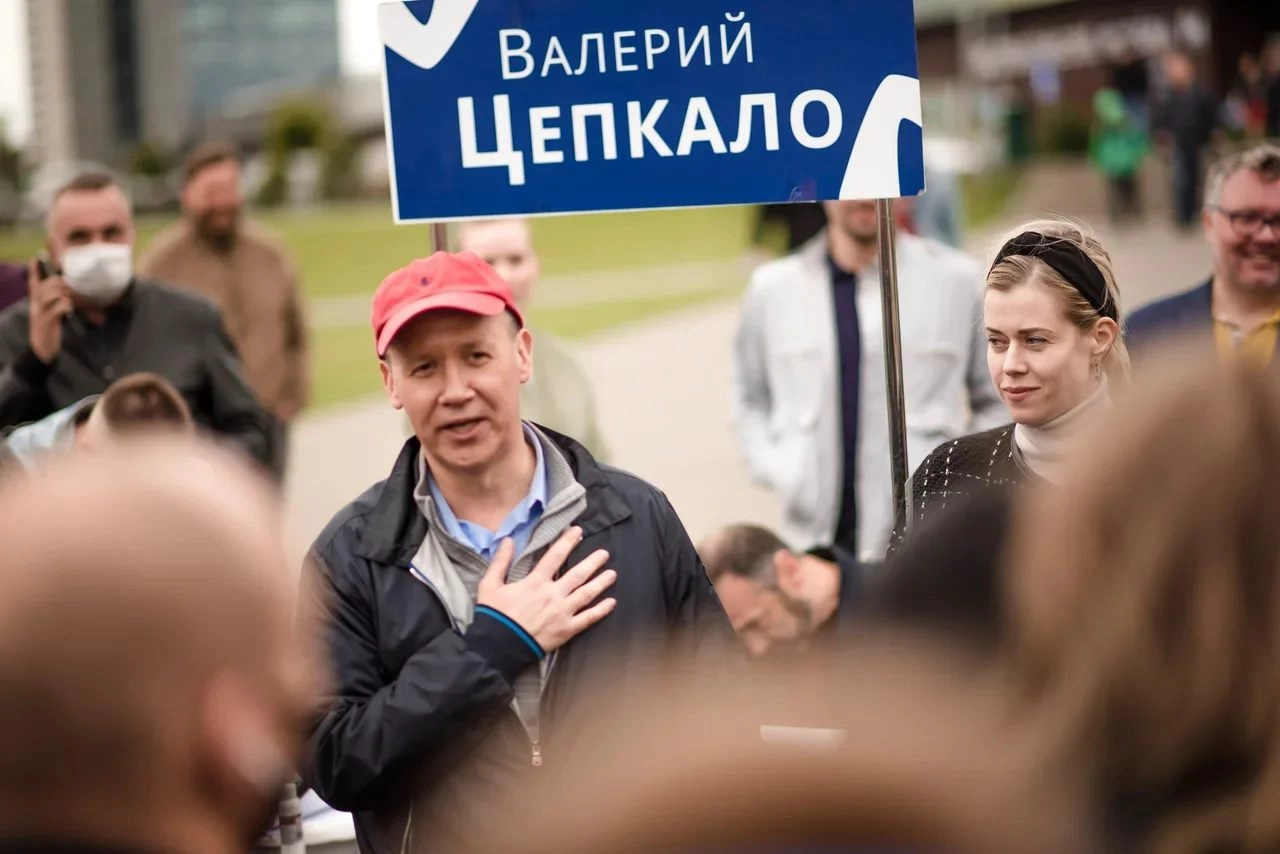
The law allowed one person to sign in support of multiple candidates — since this was not yet a vote, but merely a step toward registration. I decided to use this legal detail as a protective buffer to minimize the risk of being accused of illegal campaigning. At every rally organized by our team, I publicly urged people to sign in support of all candidates — Viktor Babariko, Sviatlana Tikhanovskaya, and Andrei Dmitriev.
At one such event in Baranovichi, where Dmitriev and I happened to appear in the same square on the same day, I called on those present to support his candidacy as well — even though some at the time viewed him with skepticism, questioning whether he was truly independent or merely a spoiler. Nevertheless, I consistently stood for political competition and insisted on equal opportunity for all.
At nearly every picket, I began quoting a well-known phrase attributed to Qin Shi Huang, the first emperor of unified China, and later popularized by Mao Zedong: “Let a hundred flowers bloom, let a hundred schools of thought contend.”
Mao had used this slogan during a brief period of cultural liberalization in 1956–1957, following the 20th Congress of the Soviet Communist Party, which denounced Stalin’s cult of personality.
To me, the phrase symbolized not only political pluralism — the idea of competition, diversity of opinion, and the right to choose — but also served as a kind of legal shield. I wasn’t campaigning for myself — I was publicly advocating for equal access for everyone, including Lukashenko himself. Only the people — “not God, nor tsar, nor hero” — should decide whose program they believe in and whom they consider capable of realizing their hopes.
At the rallies, I would even say: “Sign for Lukashenko — let him have a chance to participate in the election.”
Of course, the statement was deeply ironic. I knew full well that not a single proper picket had been organized in support of Lukashenko anywhere in the country — apart from a few staged performances where tents were hastily set up, formal signature collection took place with workers bussed in from rural areas, and everything was then quickly dismantled.
Workers from the Belarusian Consumers’ Cooperative (Belkoopsoyuz) were always the most reliable and obedient base of support for Lukashenko. They were systematically used for orchestrated events designed to fabricate an image of “mass support” — at elections, referendums, and official celebrations. Store managers, supply officers, drivers, accountants, and other cooperative employees formed a kind of "social elite" of the dying Belarusian countryside. Amid the collapse of agriculture, degradation of infrastructure, and total rural depopulation, they were among the few who retained some measure of income and stability.
Unlike city dwellers, who still had a degree of mobility — the ability to work for private firms, change professions, or move to other cities or countries — rural Belkoopsoyuz employees had no such alternative. In many cases, there were no other sources of income for dozens of kilometers. Losing a job in the cooperative system meant not just unemployment but total social disintegration: no benefits, no new openings, and no path to relocation.
From the regime’s perspective, this group was ideal: not too educated, economically dependent, geographically isolated, and reliably loyal. Unsurprisingly, they were the ones most often herded onto buses, handed placards and slogans, and then returned to their villages after the performance.
To avoid confrontations, no real signature collection for Lukashenko took place. The authorities knew that the accumulated public hatred toward the dictator would inevitably spill over onto anyone manning signature tables on his behalf. Such individuals would be met with insults, humiliation, spit, and trash dumped on their tables — all the consequences of coming face-to-face with the wronged and degraded populace.
Instead, the Lukashenko-controlled Federation of Trade Unions, led by Mikhail Orda, simply handed the Central Election Commission a list of three million pre-registered members, all of whom were automatically counted as having “supported” his nomination.
The Growth of Popular Engagement
At the first pickets, only a handful of people approached us — about ten in Lida, around forty in Hrodna. To the authorities, this may have seemed reassuring: fear and apathy still appeared to grip society. But with each passing event, the atmosphere changed. People grew bolder. They began to see pickets as a chance to influence the political situation in the country.
Social media played a decisive role. Information about time and location of events spread rapidly via online platforms. First, dozens came, then hundreds — and soon, thousands. The lines that formed near signature tables became a powerful symbol of awakening civic consciousness.
Babariko’s Strategy
Viktor Babariko placed his bet on a strong digital presence. His campaign worked actively on Telegram, Instagram, and YouTube — building a core of volunteers and supporters, especially in urban areas.
Resources were a critical factor in his success. The campaign could afford logistics, promotional materials, collection points, and even stipends for signature collectors. A hybrid model was used: both door-to-door canvassing and street pickets with strong visual branding. This allowed the campaign to function steadily, even after the candidate himself was arrested.
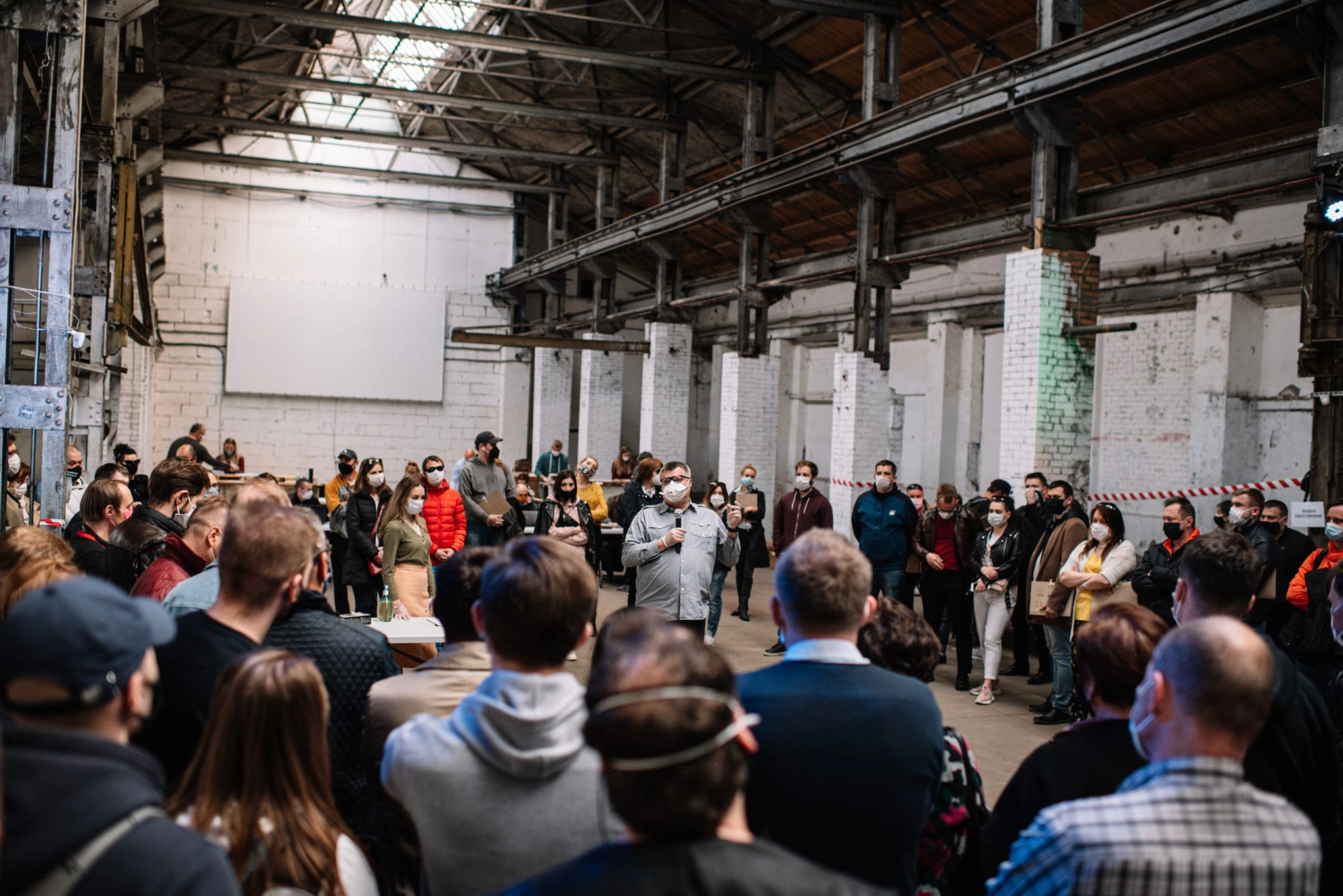
At first, Viktor avoided public pickets — likely to minimize the risk of being accused of campaigning, which could serve as a pretext for disqualification. Instead, he held closed meetings where he discussed the country’s systemic issues. For many, his very presence — whether physical or virtual — was enough to earn their support.
Later, he began appearing at public events, but his campaign was disrupted before this strategy could fully unfold.
Tikhanovsky’s Street Epic
Sergei Tikhanovsky rejoined the campaign immediately after another administrative arrest, by which time the initiative group had already been officially registered in Sviatlana Tikhanovskaya’s name. His first large-scale event was held at Komarovsky Market in Minsk, one of the busiest places in the capital.
His creative approach differed fundamentally from those of the other candidates. While Babariko and I tried to present voters with a positive vision of a democratic future — with my focus on tax, healthcare, education, and infrastructure reform — Sergei advanced the concept of “learned helplessness.” By this, he meant a condition of internal surrender, especially prevalent among state employees. In his view, they were the most frightened yet most crucial demographic: the success or failure of the campaign depended largely on whether they acted or stayed passive.
His goal was to awaken a sense of civic responsibility and show that fear was not a natural state, but a product of systematic repression — and that it could be overcome.
The central metaphor of Tikhanovsky’s campaign became the image of the cockroach — a direct reference to Korney Chukovsky’s famous children’s tale “The Monster Cockroach”, in which a tiny but mustachioed insect uses its loud threats to terrify and dominate all the animals. Only at the end is the tyrant vanquished by a small, unassuming sparrow with a single peck of its beak.
In Tikhanovsky’s interpretation, Lukashenko was that cockroach — small, loud, and able to intimidate an entire country. The image resonated powerfully with the public. It spawned cartoons, graffiti, and memes showing Lukashenko with oversized mustaches. And the only way to defeat him was with a slipper.
At the Komarovsky picket, Tikhanovsky brought a slipper — a symbolic weapon against fear and authoritarianism. Thus, the campaign transcended the act of collecting signatures and became a kind of street performance, a vivid act of symbolic rebellion.

Sergei Tikhanouski with a slipper
This was precisely the kind of protest that infuriated Lukashenko the most.
Dictators typically do not fear accusations of brutality, corruption, or even mass repression. Labels like “bloody,” “cruel,” or “cannibalistic” only amplify their terrifying image. But when they become objects of ridicule, when they are turned into caricatures — that is when their carefully constructed myth collapses. The illusion of greatness and fear is shattered.
To be continued
